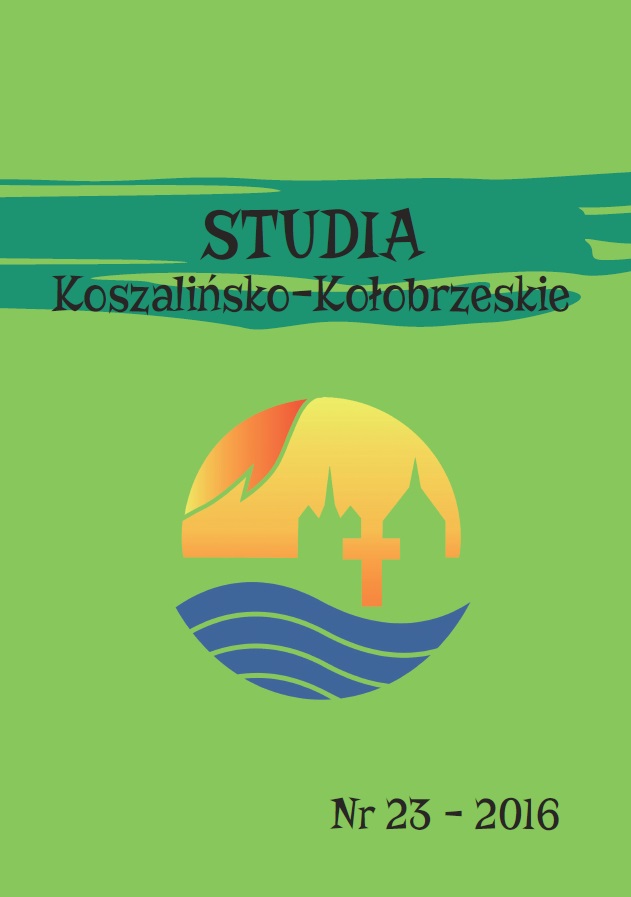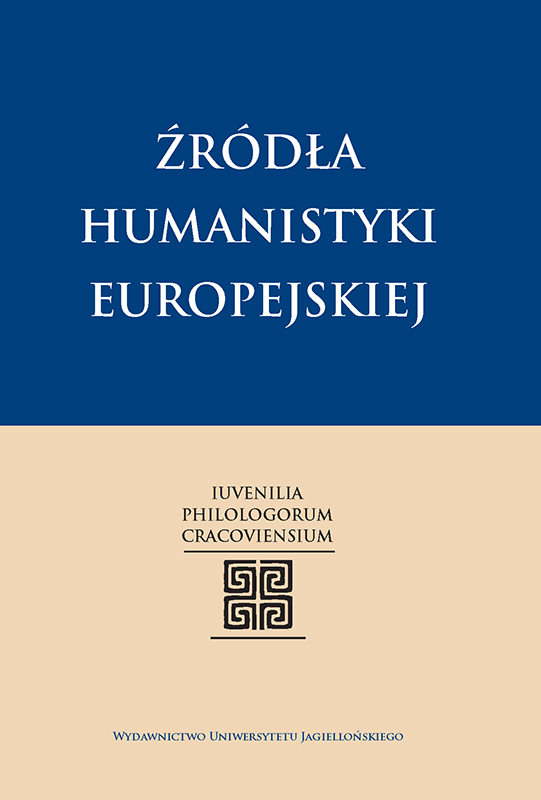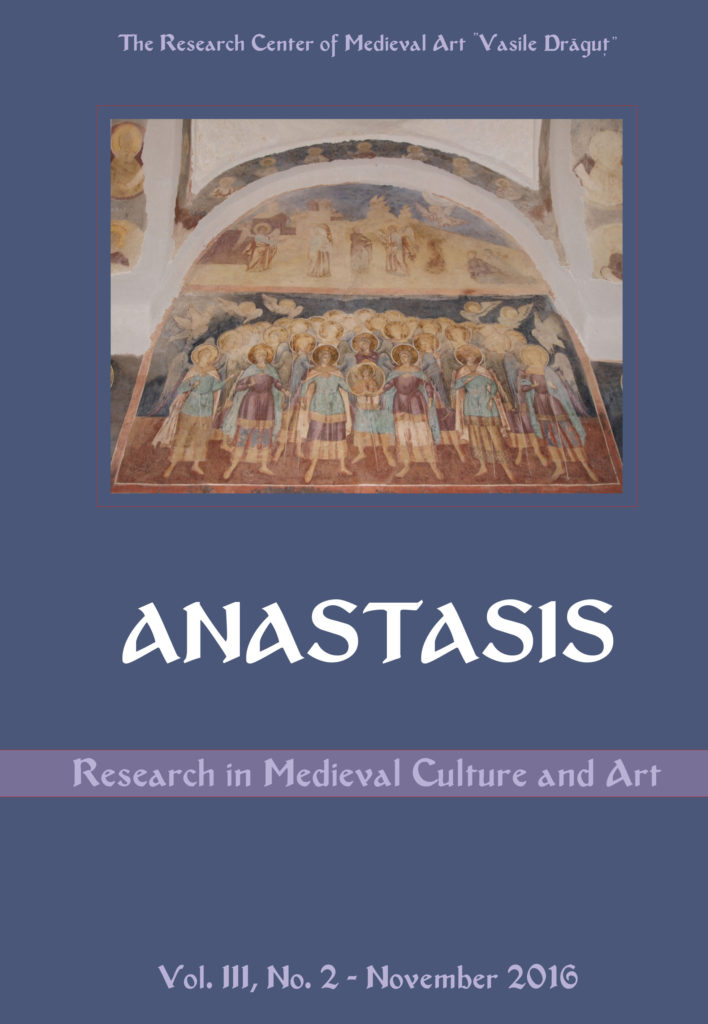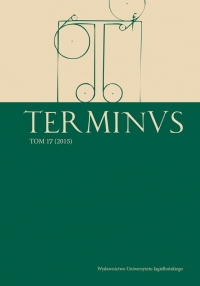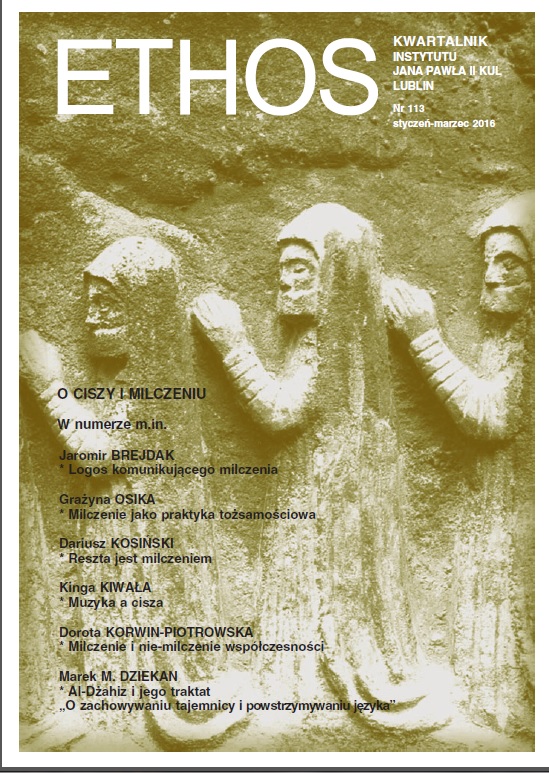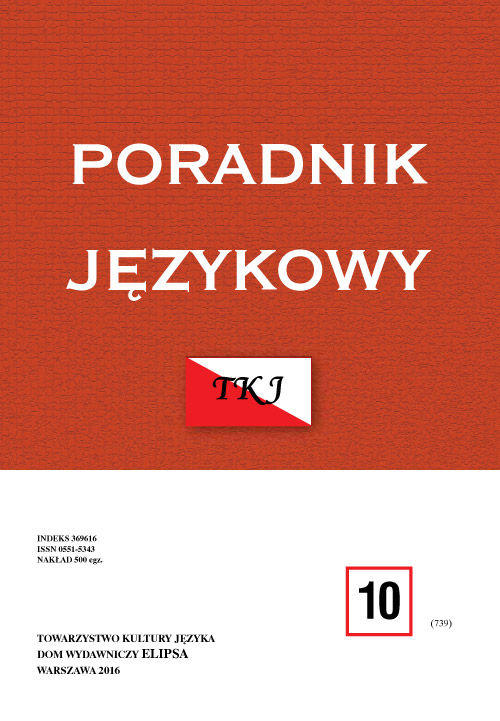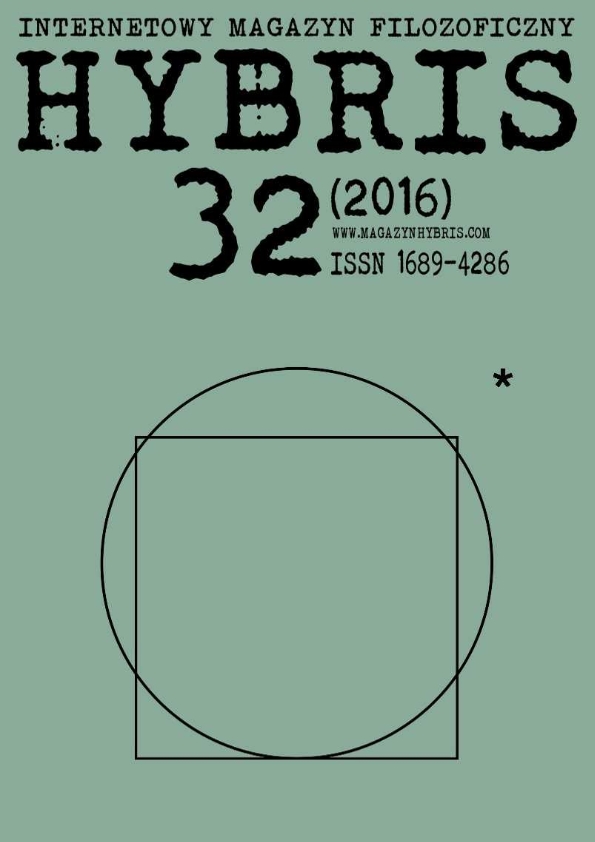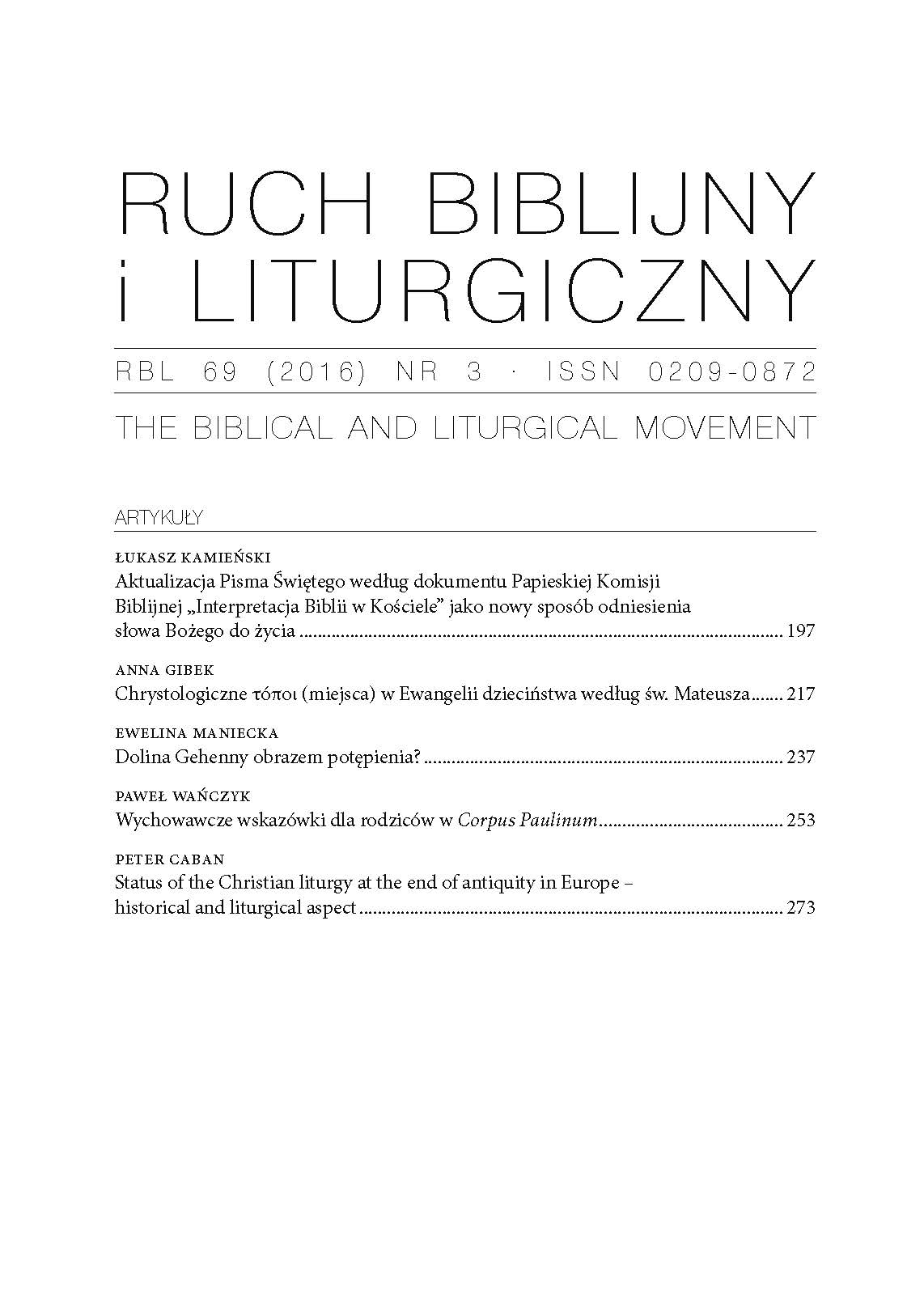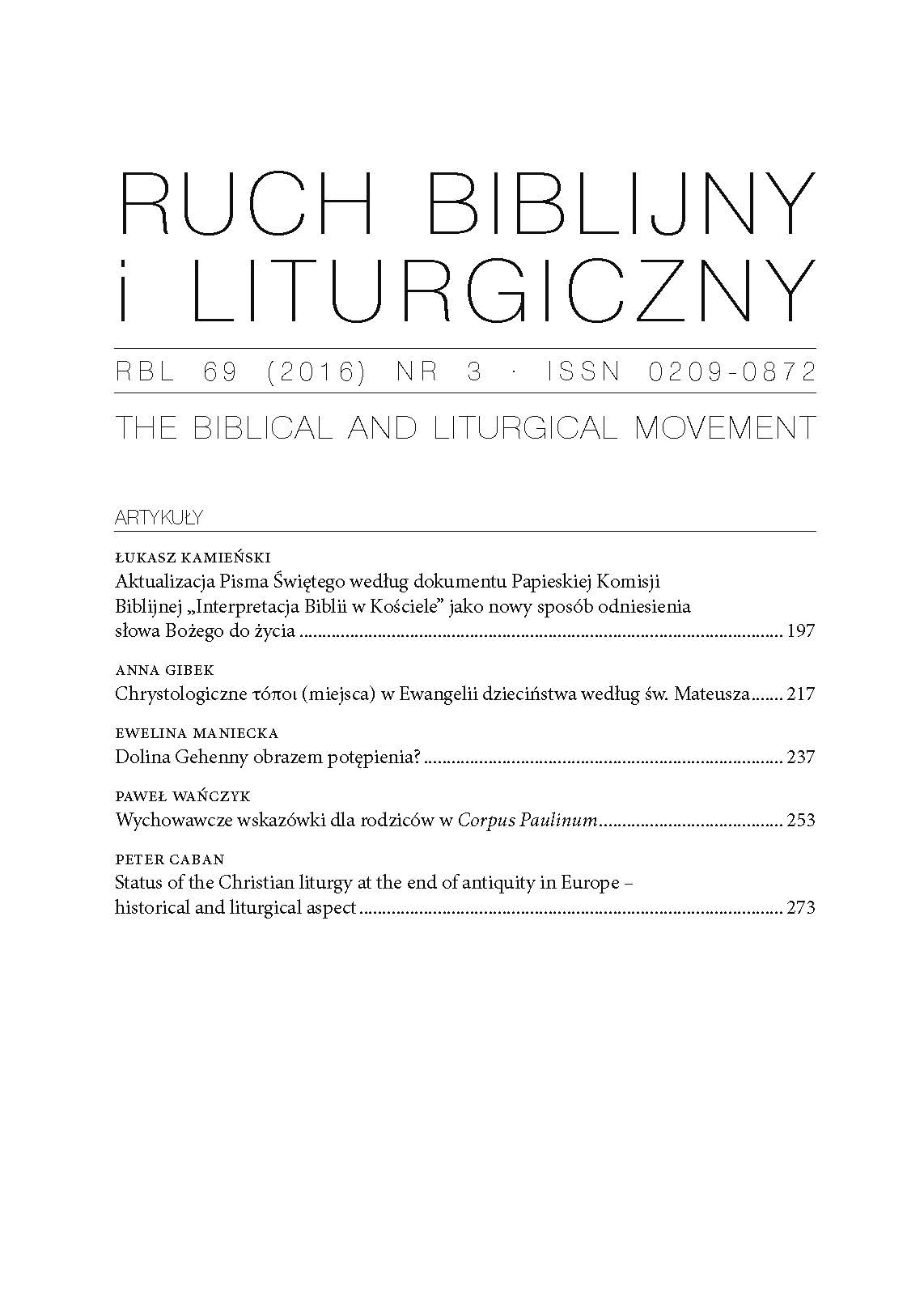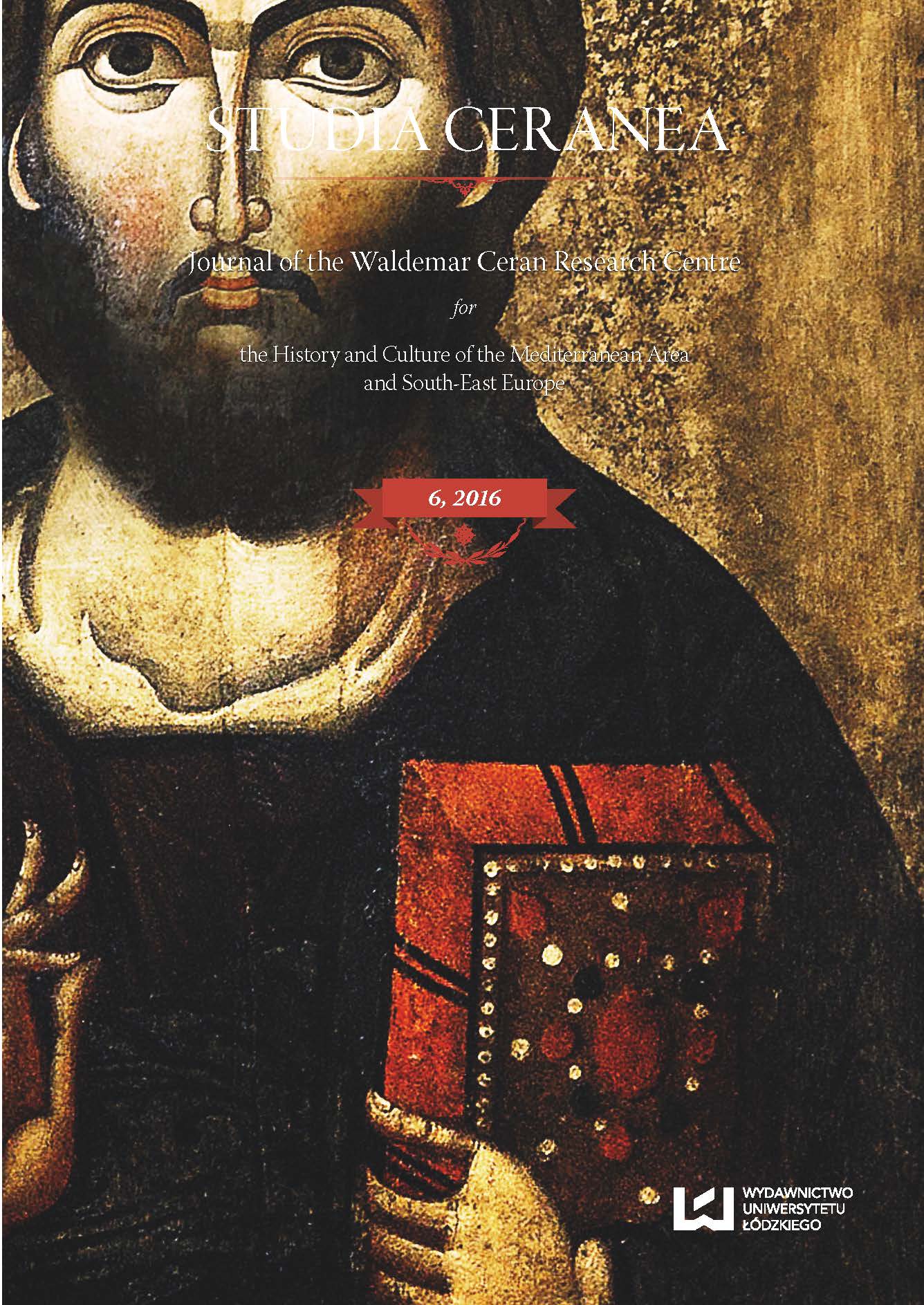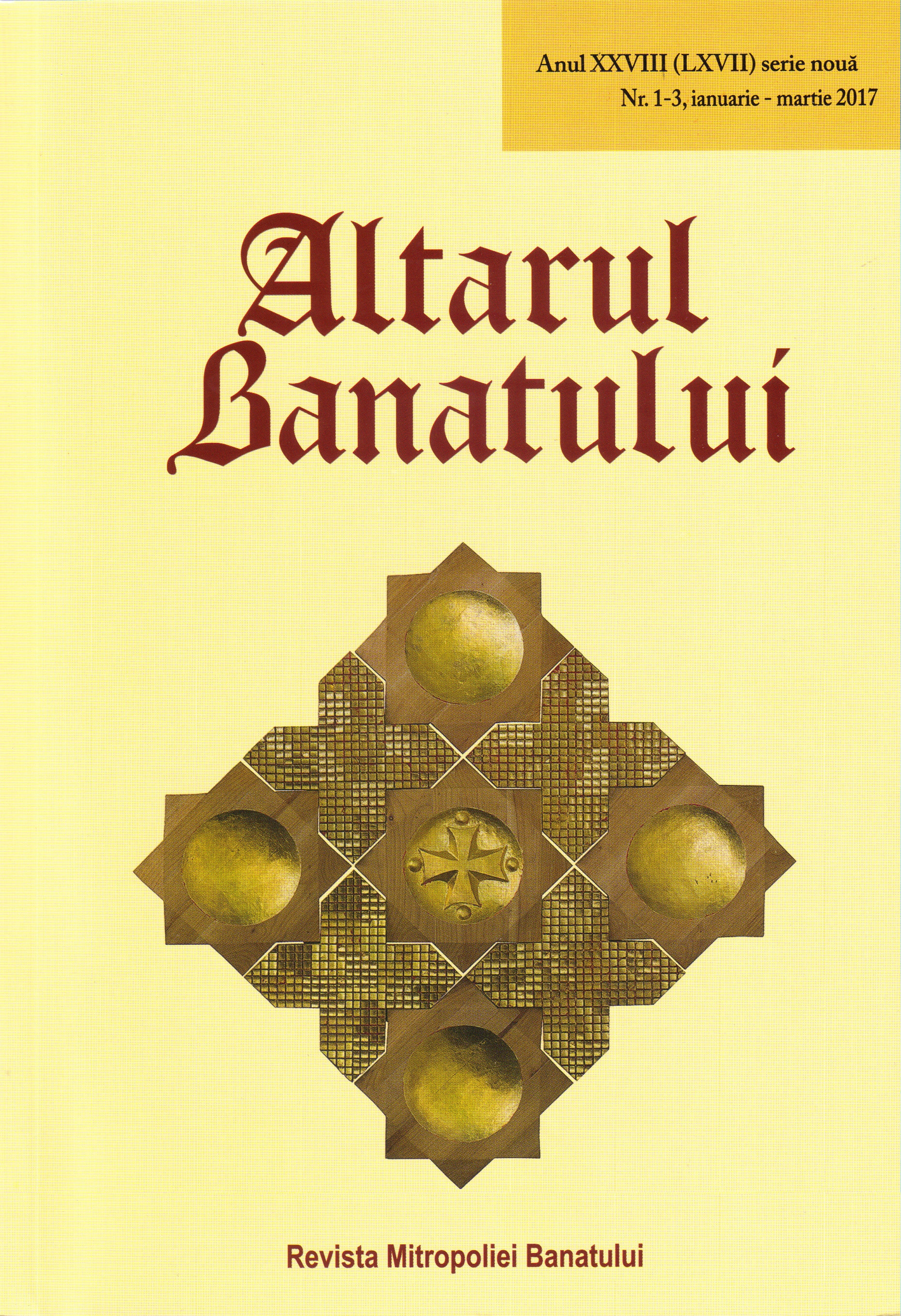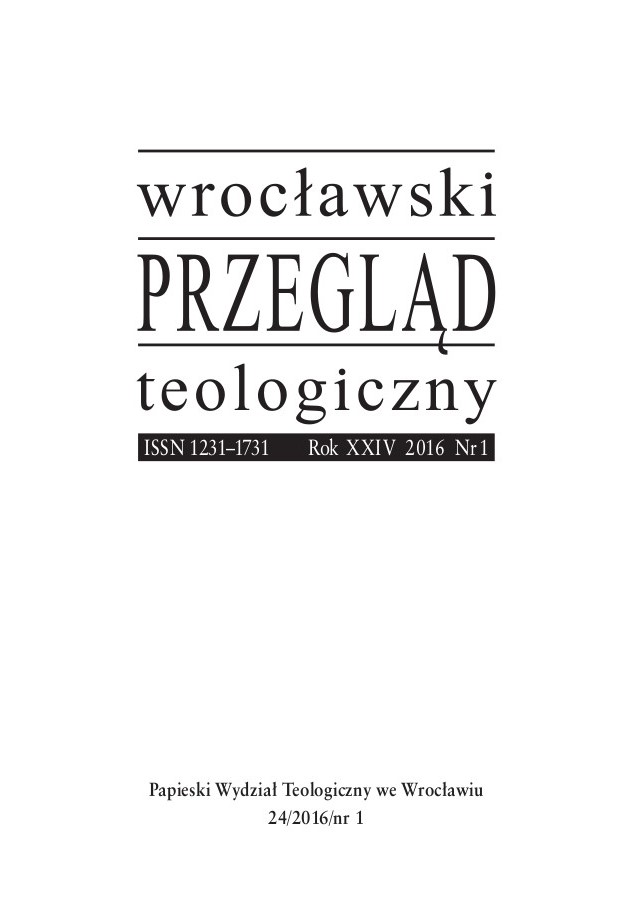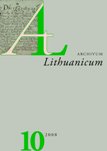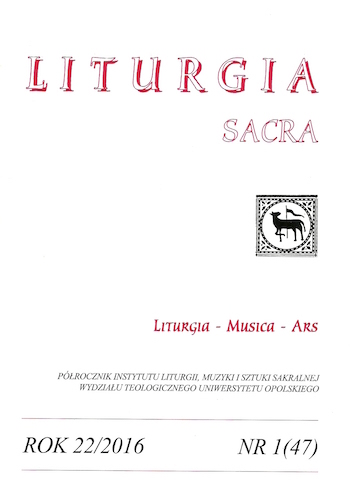
Biskup jako pasterz w tekstach liturgii słowa w obrzędach święceń biskupich
The Bible has a fundamental place in the theological reflection on the bishop’s role in the Church. Selected biblical readings read during liturgy, are not only the word of God, but also clarify meaning of the celebration and of the reality manifested during different liturgical actions of the Church. For this reason, while reflecting on the pastoral mission of the bishop, it is worthwhile to analyze the readings of the liturgy of the word selected for the rite of ordination of bishops. In this study, due to the large number of proposed readings, only some examples have been analyzed (two taken from the OT, and eight from the NT). The analysis, in the light of word of God, shows both the bishop’s role as pastor and the meaning of his ministry. As pastor the bishop is primarily a proclaimer of the Good News and protector of the faithful entrusted to him. His entire pastoral service must follow the example of the true Good Shepherd — Jesus Christ (cf. J 10,11).
More...
